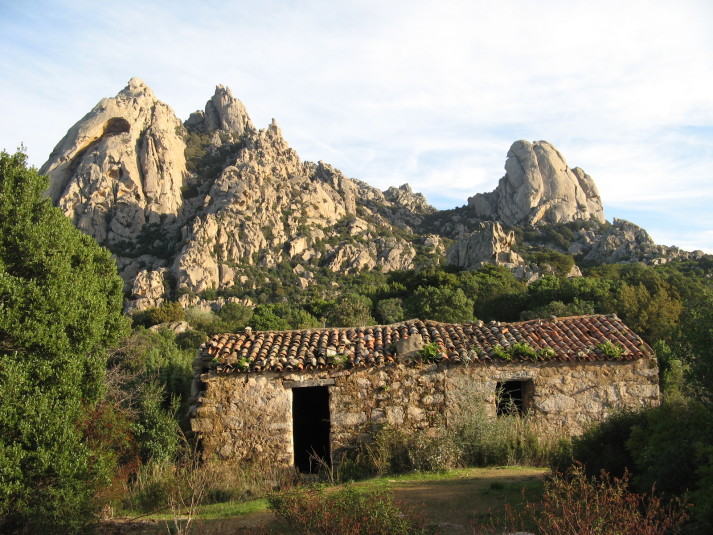STAZZI OF GALLURA

The stazzi are typically buildings from Gallura, which characterize the countryside of north-eastern Sardinia from the rest of the island. They represented the fulcrum of rural life, on which, for centuries, the island’s economy was based.
They are easily recognizable by their rectangular and simple shape and by the use of materials, usually juniper, oak, cane and externally covered with rectangular blocks of granite. In most cases they were built on a single floor (if raised on several levels they were called “palazzu”), surrounded by large grounds.
The main principles are those of simplicity, practicality and austerity.
The function was not to flaunt wealth or power, but that of an organized self-sufficient rural structure, functional and resistant to bad weather.
There are several versions on the diffusion of stazzi in Gallura. The first is that they entered Northern Sardinia around the seventeenth century, when some settlements from Corsica established themselves in the impervious Gallura, importing their architecture and their language. Actually, the Gallura dialect is extremely similar to the Corsican one.
However, there is no evidence to prove the existence of stazzo structures within these settlements, and it seems possible, instead, that the stazzi have followed a centuries-old and continuous evolution, from the post-medieval branch huts used by the local nomad shepherds as a station (hence the term “stazzo”), to the masonry houses of the 19th century.
In ancient times, lu stazzu was managed as a real self-sufficient social system inhabited by the owner of the lands and his family, in which each member had his own job. Often, in the same area several stazzi were built, called “cussorghie”, which housed different families united by synergies and a strong sense of collaboration. The social relations between the members of the cussorghie are defined as the “culture of stazzi”, characterized by a deep sense of brotherhood that united the inhabitants. The term “manialia” means the feeling of equal mutual help, as regards resources or workforce, on which everyone could count. The shepherds-farmers possessed and shared important technical knowledge regarding: atmospheric phenomena, soils, botany, on the cycle of wheat and milk.
Only in much more recent times (around the 1960s), these structures lost their rural function to be destined for a completely residential function, due to the abandonment of the agro-pastoral sector and the strengthening of the tourist industry in the area.
The stazzi, scattered among the Gallura hills for about 400 years, preserve an important piece of the Gallura and Sardinian cultural heritage.
Today, the often abandoned stazzi, no longer host economic activities related to the agro-pastoral sector, but are increasingly being converted into accommodation facilities or homes, aimed at not completely denaturalizing the original purpose and function of these structures.
BARNES Porto Cervo deals with about thirty stazzi in Costa Smeralda, in unique naturalistic contexts that can no longer be built, but can be purchased and retrained, to give a new life to these important historical and social structures, while respecting their cultural heritage.

 It
It  Fr
Fr 


